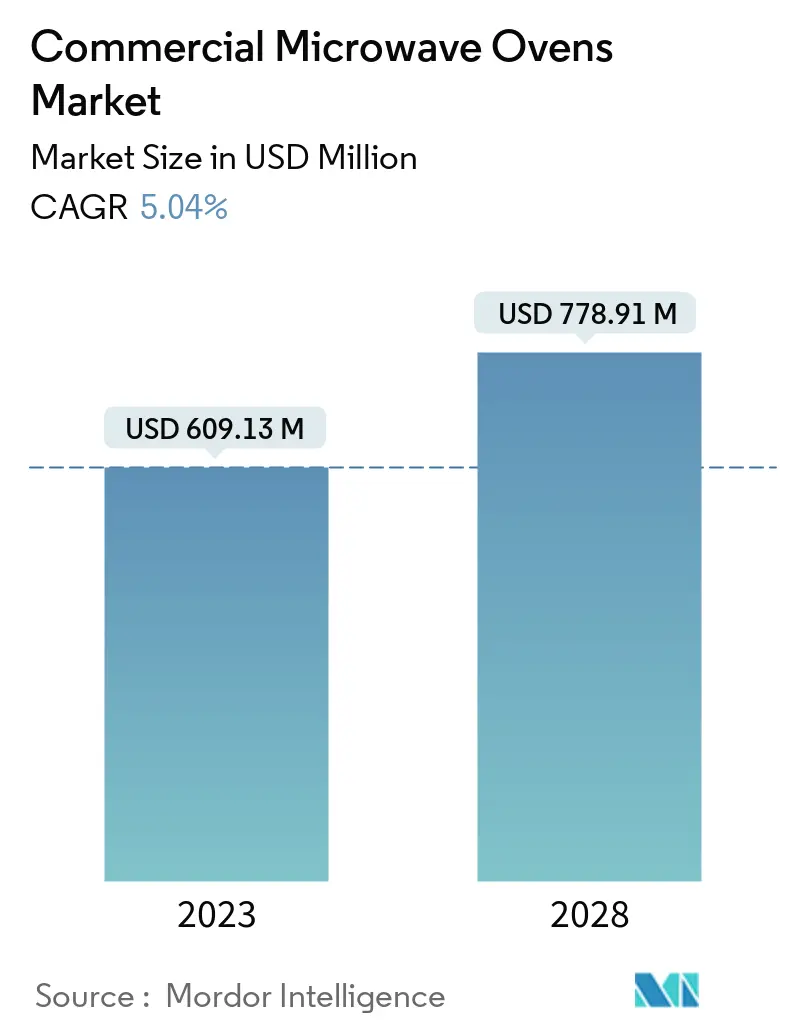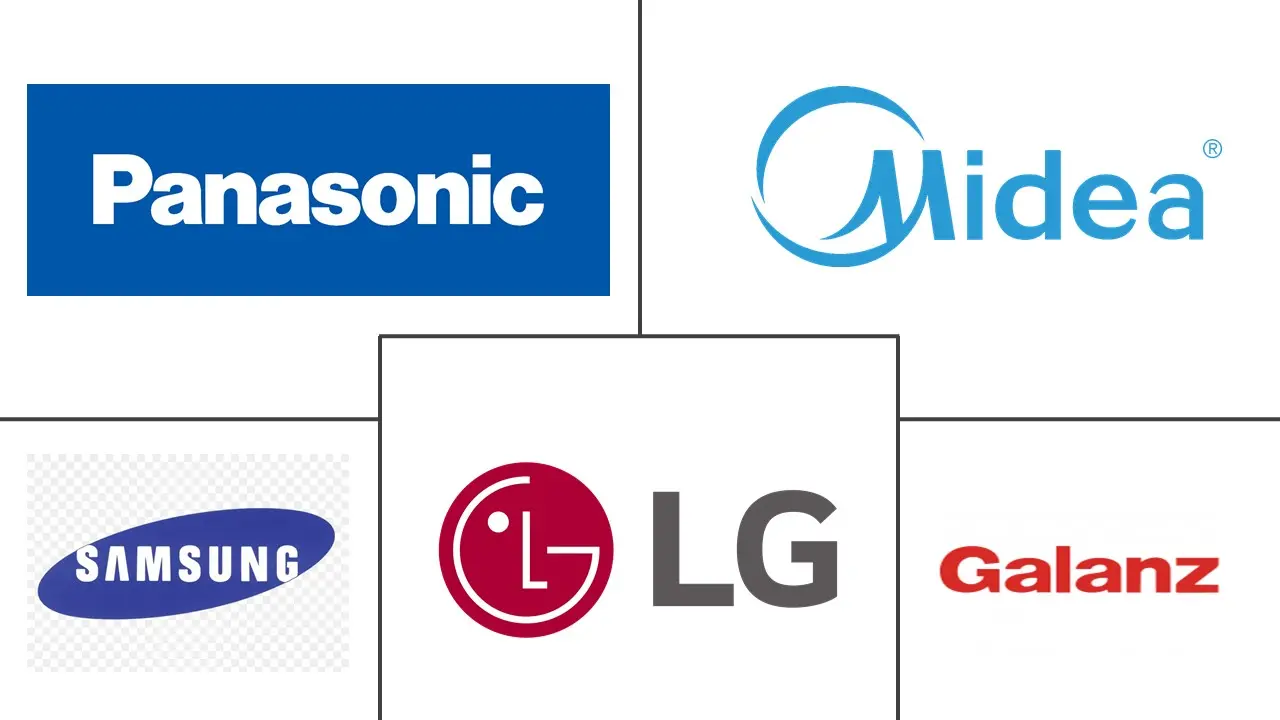Market Size of Commercial Microwave Ovens Industry

| Study Period | 2019 - 2028 |
| Market Size (2023) | USD 609.13 Million |
| Market Size (2028) | USD 778.91 Million |
| CAGR (2023 - 2028) | 5.04 % |
| Fastest Growing Market | Asia Pacific |
| Largest Market | North America |
Major Players
*Disclaimer: Major Players sorted in no particular order |
Need a report that reflects how COVID-19 has impacted this market and its growth?
Commercial Microwave Ovens Market Analysis
The Commercial Microwave Ovens Market size is expected to grow from USD 609.13 million in 2023 to USD 778.91 million by 2028, at a CAGR of 5.04% during the forecast period (2023-2028).
The market has been negatively impacted due to the COVID-19 pandemic and the global lockdown. The lockdown led to restrictions on manufacturing activities and supply chains. The lockdown in China forced commercial microwave oven manufacturers based in the United States and Europe to temporarily halt production as they export several input supplies. This led to an increase in the supply and demand gap. The outbreak was expected to continue to have a negative impact on businesses throughout 2020 and into 2021.
Commercial microwave ovens have significant usage across the foodservice industry due to their multiple benefits such as expedited cooking process, cost-effectiveness, improved efficiency, and lesser time consumption. Modern-day commercial microwave ovens are highly programable and feature internal memory systems that can store up to 100 recipe settings. The digitized displays of these ovens help users conveniently explore various options and set timers, making them more accessible for employees and staff. Commercial microwave ovens are versatile and offer faster and more efficient cooking options for commercial foodservice establishments like restaurants, cafés, takeaways, etc. These devices are best suited for large-scale food operations for their beneficial uses in reheating food, quick defrosting, and a variety of cooking options. The rapidly burgeoning global demand for energy-efficient cooking methods is a key driver for the commercial microwave ovens market. The market growth can be attributed to a plethora of factors, such as the numerous advantages of commercial microwave ovens over traditional microwaves, like enhanced functionality and lesser energy and time consumption, the expanding foodservice industry (including restaurants, hotels, and cafés), the surging demand for microwave ovens across corporate firms and other commercial establishments, the rising popularity of foodservice outlets like food trucks and takeaways, the emerging cloud kitchen and online food delivery sector, the booming hospitality sector, and technological advancements in microwave ovens. Manufacturers are increasingly focusing on developing commercial microwaves with automatic timers for efficient cooking processes, which is a highly conducive factor for the market growth. The amplifying demand for frozen and ready-to-eat food items, improving living standards, rising disposable incomes, rapid urbanization, growing working population and their packed work schedules, and the soaring demand for catering services for seminars and social gatherings are other pivotal factors contributing to the market growth. However, commercial microwave ovens have certain disadvantages, such as rapid heating that often leads to overcooked food, improper container ventilation, and unevenly cooked food, causing cold spots. Such factors are expected to limit the demand for commercial microwave ovens to some extent. Moreover, high power consumption and increasing costs of these appliances act as key restraints for the global market growth.
